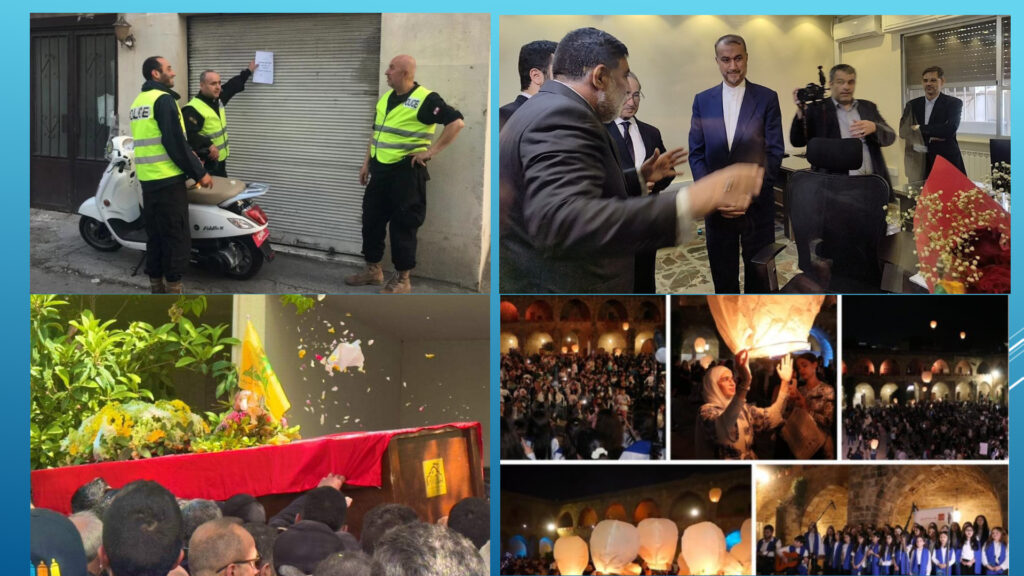The first direct Iranian attack on Israel from Iranian territory
On April 13, Iran launched a large-scale offensive against Israel, including some 170 UAVs, more than 30 cruise missiles, and 120 ballistic missiles. 99% of threats were intercepted. No UAVs or cruise missiles penetrated Israeli territory. A few ballistic missiles penetrated Israeli territory and the rest were intercepted. Several missiles hit the Nevatim air base, causing minor damage to infrastructure. According to Iranian sources, this is the base from where the planes that attacked the Damascus consulate took off. Subsequently, the IDF Spokesperson released documentation demonstrating the base’s operational readiness. Furthermore, it was reported that a 7-year-old girl suffered serious injuries in the Negev by shrapnel from interception rocket debris. See more –
The Lebanese arena:
War data:
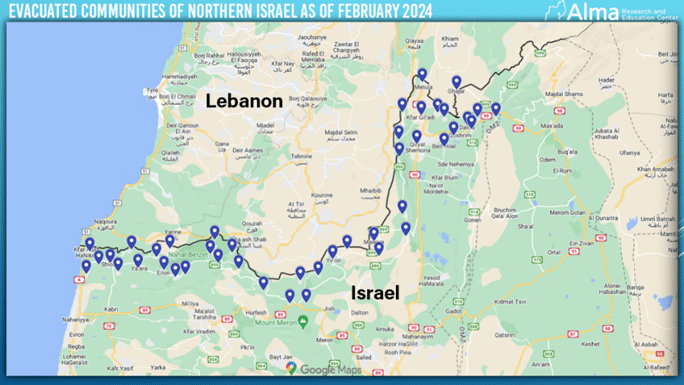
In Israel, the government evacuated 43 communities located up to five kilometers from the Lebanese border. A total of about 61,000 citizens. To them were added several thousand more who decided to evacuate independently.
It should be noted that not all Israeli communities have been totally evacuated, and there is still a civilian presence. This is because these communities rely on tourism and agriculture. Farmers come to work on the land, in the orchards, tending to cow and goat herds. Furthermore, some of the communities’ industrial plants are still operational and employ workers from non-evacuated areas. In addition, some of the evacuees returned independently.
The Israeli government has extended the evacuation period until the summer of 2024 (July/August 2024).
Hezbollah has killed 6 Israeli civilians and 1 agricultural worker with foreign citizenship so far. A total of 7 civilians were killed.
Over the last week, 50 attacks have been carried out on the northern border. Hezbollah claimed responsibility for 39 of these strikes, which used high-trajectory missiles (including Grad and Burkan), anti-tank weapons, and unmanned aerial vehicles.
Out of all the attacks in the northern sector, the Shiite militias in Iraq claimed responsibility for 2 attacks. In 9 other incidents, no responsibility was taken: one incident of a single launch from Syria, 6 incidents of UAV infiltrations and 2 incidents of high-trajectory missile fire.
Almost every day during this week, Hezbollah launched UAV attacks against Israel (6 claims of responsibility). In one of them, a UAV was launched against a civilian home in Kibbutz Hanita. According to Hezbollah, the residence served as a military headquarters. As a result, one civilian sustained serious injuries. This is the first time Hezbollah launched a UAV at a residential residence (it has previously targeted military bases).
Prominent launching and shooting incidents against Israel:
(April 13) A UAV attack on a civilian house in the Israeli community of Hanita seriously injured a civilian. This is the first time Hezbollah has launched a suicide UAV at a civilian house (so far, they have been launched at military bases).
(April 13) An explosive UAV was launched at the Iron Dome battery (according to Hezbollah’s claim of responsibility).
(April 14) About 30 Grad rockets fired toward three bases in the Golan Heights. One of the bases, according to Hezbollah’s announcement, is an air and missile defense headquarters. These launches coincided with the Iranian attack on Israel.
In this context, it should be noted that Hezbollah’s involvement in this attack was exhibited only in the launching of the above salvo.
Hezbollah casualties:
Over the past week, a statement was released reporting 1 Hezbollah military operative killed.
As of October 8, 2023, a total of 274 Hezbollah operatives have been killed. Most of the operatives killed live south of the Litani River (179 operatives killed, constituting 65% of all the operatives killed). Many Hezbollah operatives and their families live in southern Lebanon near the border with Israel. They operate in southern Lebanon as part of Hezbollah’s geographic units (Nasser/Aziz) and Hezbollah’s designated units (Radwan unit), while assimilating into the civilian population (human shield tactics).
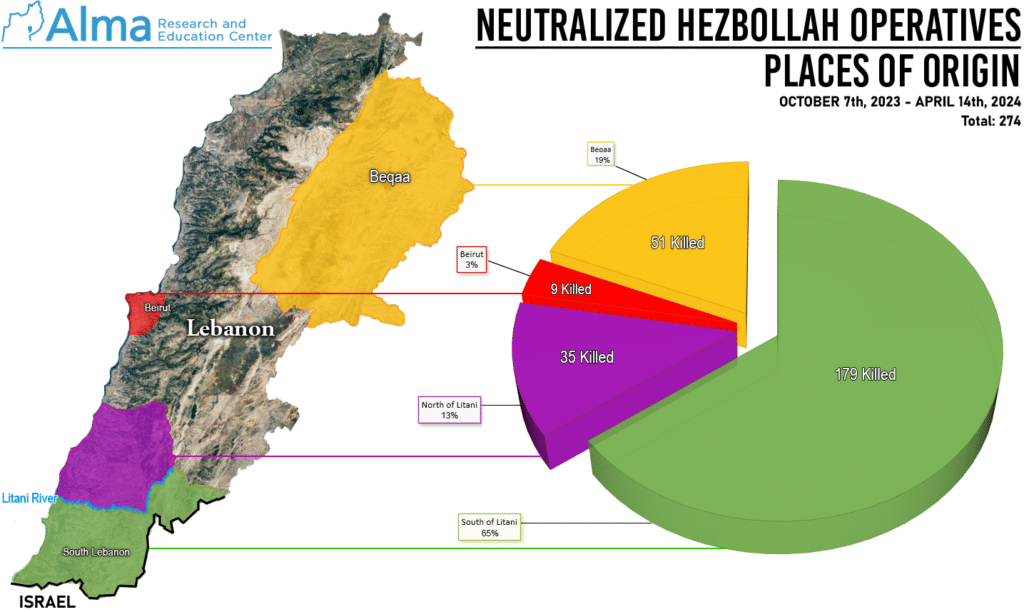
Prominent airstrikes in Lebanon:
(April 8) A target was attacked in the center of the Lebanese village of Al-Sultaniyah. The attack killed Ali Ahmad Hussein, also known as Abbas Jaafar, who served as commander of the Hajir sector in the Radwan unit (equivalent to brigade commander). His elimination was noted by us in the previous weekly report. In this report we attached two new visuals: first, the exact location of its elimination. The second, his picture near the Lebanon- Israel border.
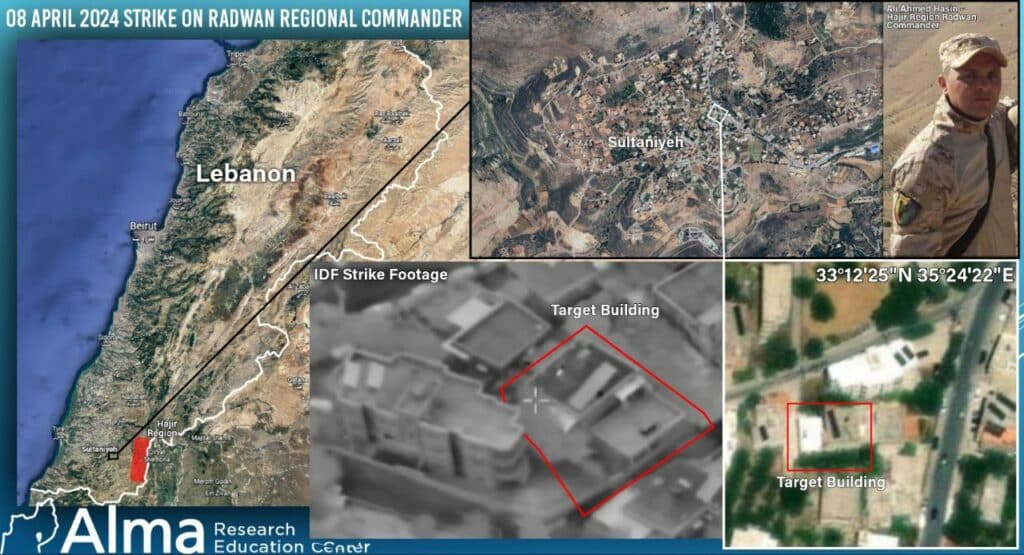
Pictured below: Abbas Jaafar dressed in civilian clothes with a hat and sunglasses, trying to hide his identity adjacent to the Israeli border fence (before October 7, 2023). Before October 7, 2023, Radwan unit operatives were present very close to the border fence along with geographic unit operatives. In our estimation, it is very likely that they were waiting for the order to carry out their mission to invade the Galilee and were very ready to carry out this mission.
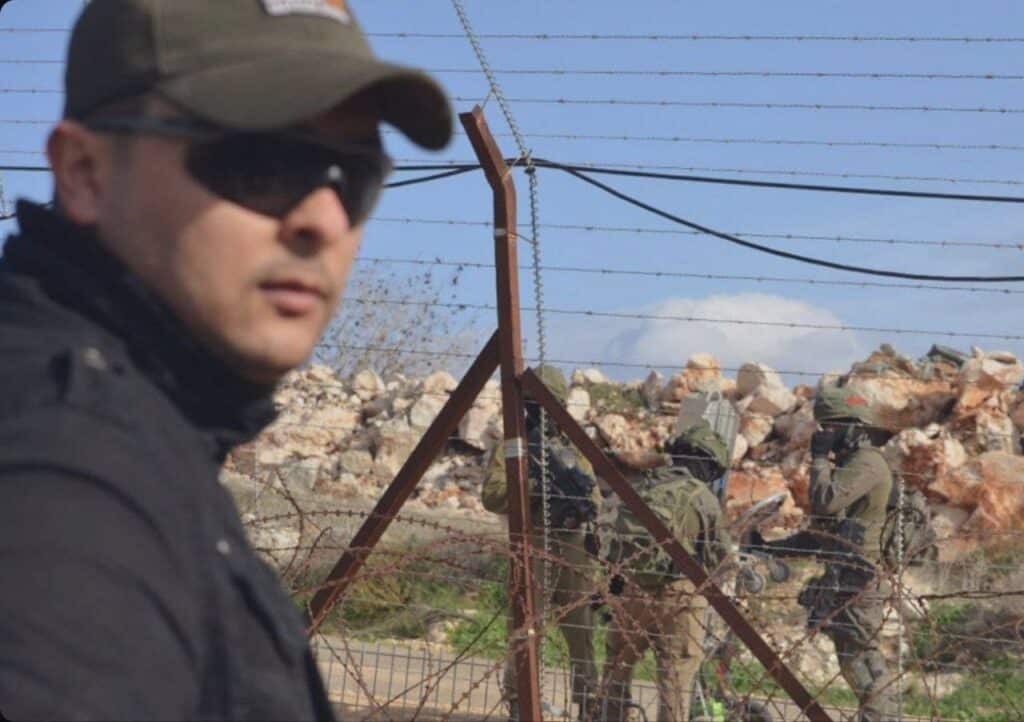
(April 14) A Hezbollah weapons manufacturing site in a-Nabi Chit in the Bekaa Valley was attacked. The attack was carried out in response to dozens of Grad rockets fired at the Golan Heights on April 13 (according to Hezbollah: toward military bases).

Hezbollah General:
(April 8) Nasrallah’s speech in honor of Mohammad Reza Zahedi (commander of the Quds Force in Syria and Lebanon who was eliminated on April 1):
Nasrallah spoke about the attack on the Iranian consulate in Damascus, saying that attacking the Iranian military advisers present was the highest level of Israeli aggression of its kind in Syria in years. He also said that Israel had erred in this attack and that it was Iran’s natural right to respond. Israel’s goal, he claimed, was to remove the Iranian advisors from Syria, but it failed, and they remain to support the resistance in Palestine and Lebanon and support Syria.
In his speech, he praised Mohammad Reza Zahadi, describing him as a pillar of the Islamic revolution in Iran. Nasrallah describes close ties to Zahadi and that they worked together for 14 years. He also stated that Zahadi was a direct appointment of Qassem Soleimani to the Quds Force in 1998 as head of the Revolutionary Guards in Lebanon.
Nasrallah continued to maintain the narrative of victory of the Iranian resistance and axis in the face of Israel’s defeat in its “longest war in the region.” In addition, Nasrallah spoke about the Israeli public’s dissatisfaction with the government and the pressure exerted by the American administration on Israel. According to him, because of public opinion in the United States, Biden is pressuring Israel to reach a ceasefire that will lead to the end of the war and would mean a historic defeat for Israel.
In addition, Nasrallah discussed the mood in the internal Lebanese arena in light of the abduction of Pascal Suleiman (see below). Nasrallah rejects the accusations leveled against Hezbollah in the incident and warns of the division among the Lebanese people, who do not want to end up with another civil war.
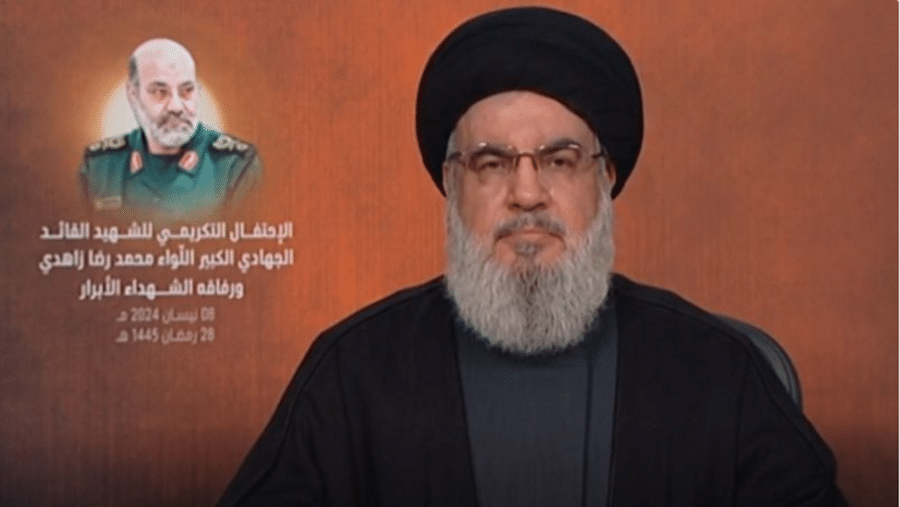
Lebanon – General:
(April 7) Pascal Suleiman, a senior official in the anti-Hezbollah Lebanese Forces (Christian) party, was abducted from his car and his body was found in Syria. Suleiman’s murder enraged the Christian public in Lebanon, some of which is directed against the Syrian refugees in Lebanon and some against Hezbollah. According to Lebanese media affiliated with the Shiite axis, Suleiman was abducted to Syria by Syrian refugees as part of a car highjack and an attempt to demand a ransom. Hassan Nasrallah also addressed the incident in his speech (March 8, 2024) and blamed the Syrian refugees. However, the Lebanese Forces party has officially announced that as far as it is concerned, this is political murder – until proven otherwise.
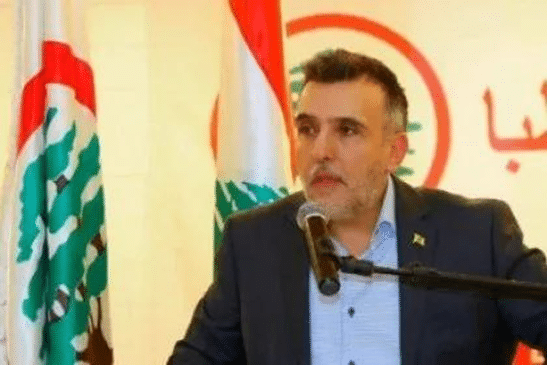
Samir Geagea, head of the Lebanese (Christian) Forces party, pointed an accusing finger at Hezbollah. In addition, during Pascal’s funeral cries of “Hezbollah is a terrorist organization” were heard (video below).
Suleiman’s murder once again provoked opposition and anger over the presence of Syrian refugees in Lebanon. Against the backdrop of Lebanon’s severe economic crisis, since 2019, it has hosted some two million Syrian refugees. Over the past week, videos have circulated on social media showing Syrian refugees being attacked by angry civilians. Authorities have also cracked down on Syrian refugees and closed a number of businesses owned by Syrians.
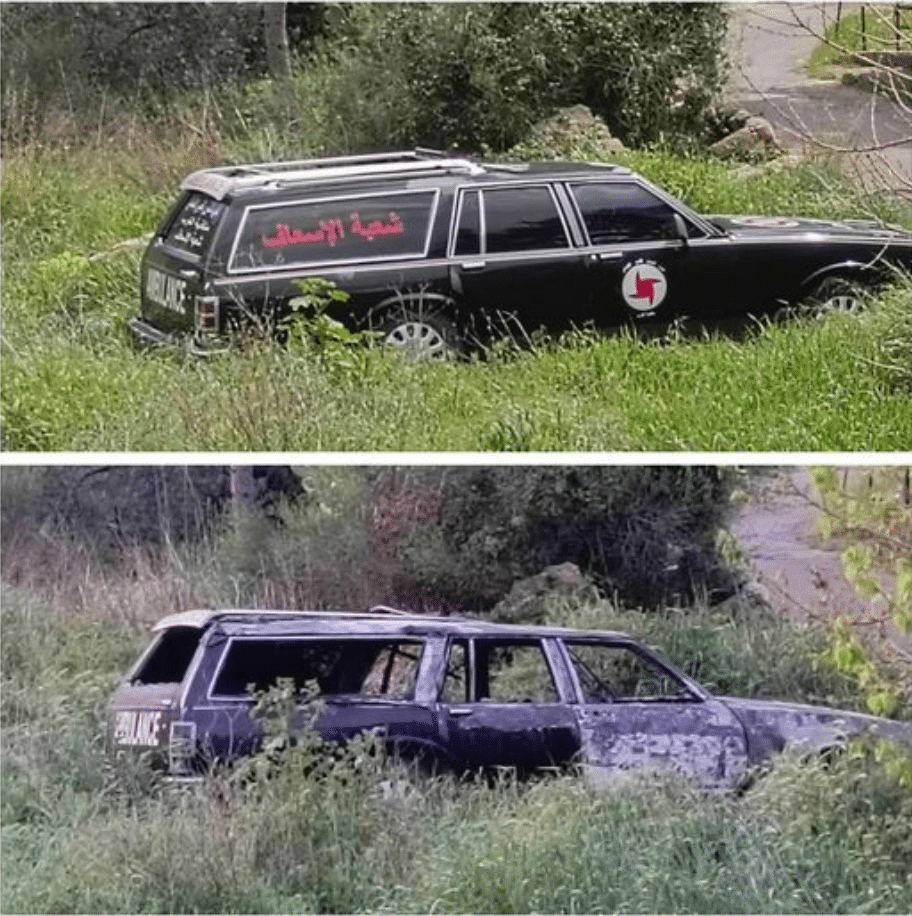
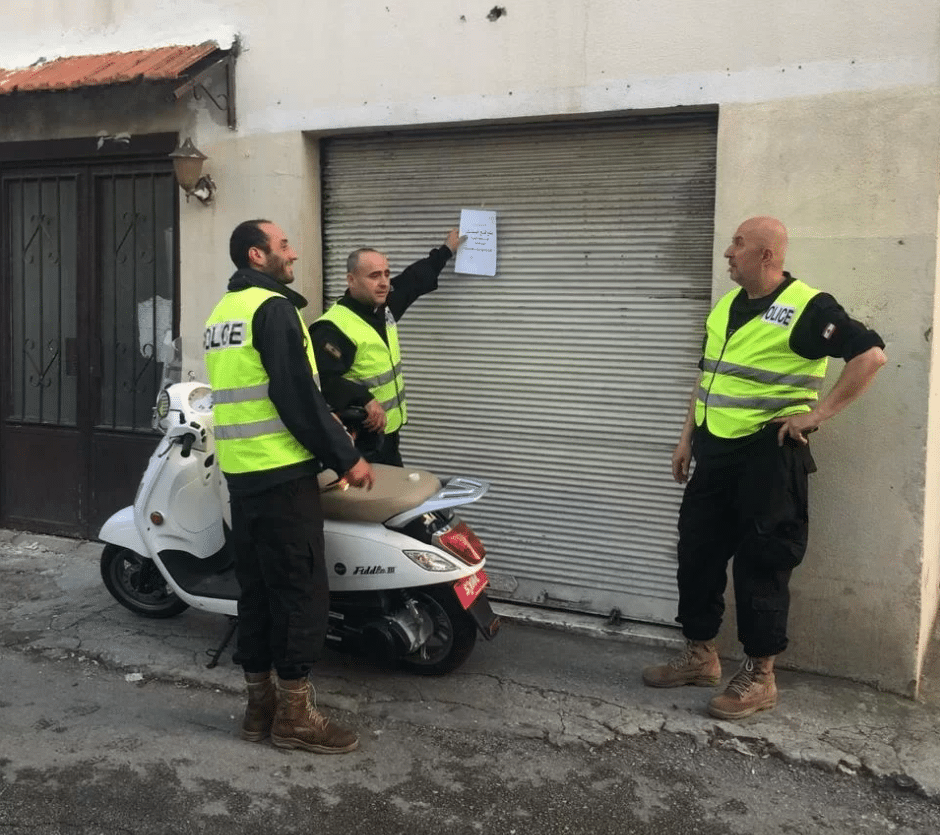
(April 8) The head of the council of Meiss Ej Jabal, a Shiite village in southern Lebanon affiliated with Hezbollah, revealed data on the destruction in the town: 65 buildings were completely destroyed, 650 structures were partially destroyed, and 165 businesses and commercial buildings were partially destroyed. In addition, he said that there is significant economic damage, especially to the town’s agricultural sector (which includes growing wheat and tobacco).
(April 9) Mohammed Ibrahim Srour, a Lebanese money changer, was discovered shot in the town of al-Marri, near Beirut. The US Treasury Department sanctioned Srour in 2019 for channeling funds from Iran to Hamas as well as his association with Hezbollah. According to local accounts, Srour was enticed by a Lebanese woman to send her $14,000 from Iraq. After receiving the money from the woman, who refused to reveal her identity, Srour went to transfer the funds, where he was captured and killed.
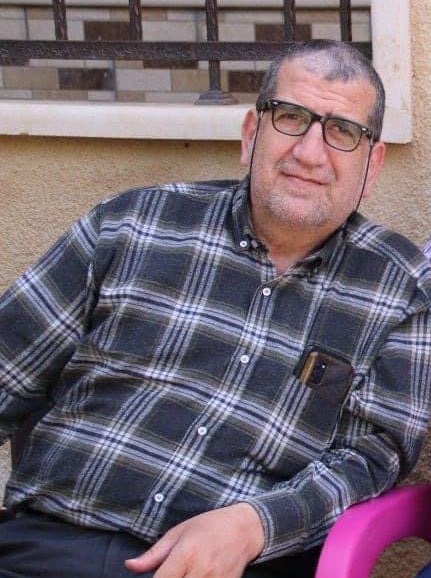
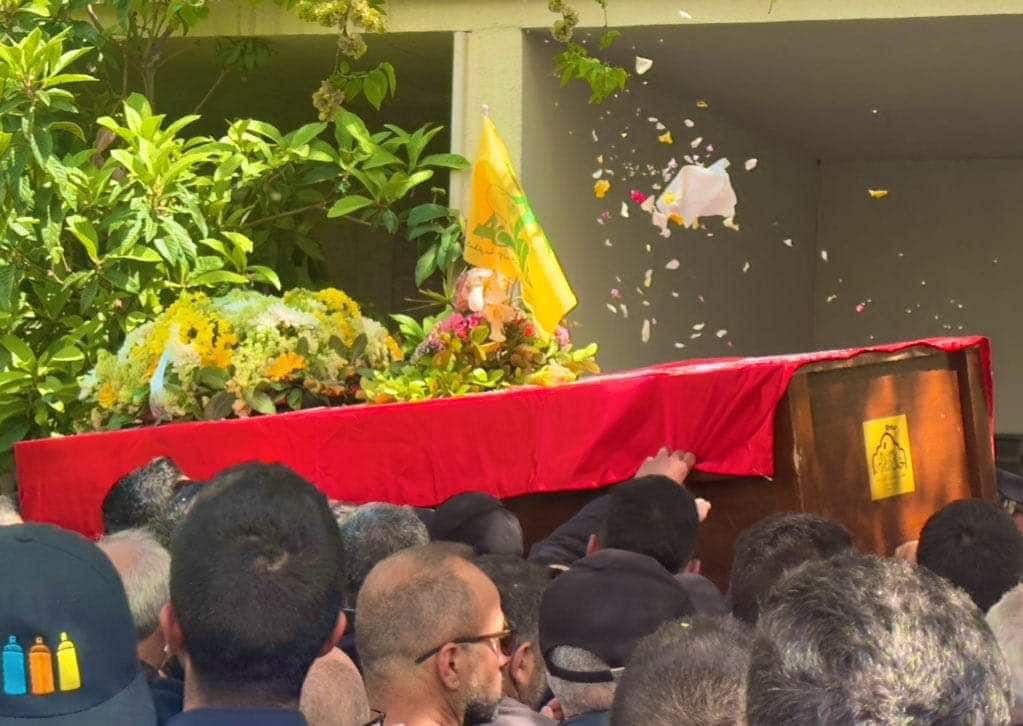
(April 13) Rami Naim, a prominent Hezbollah critic, was seized by Lebanese security forces after stating in an interview that he was willing to fire on the security forces. During the interview, Naim criticized the security forces’ treatment of Hezbollah associates, particularly in light of Pascal Suleiman’s murder: “Let the security forces make mistakes in the area where I am coming, we will fire at the security forces and the Lebanese army… either they treat us like them [Hezbollah] or we disobey all these security forces.” He further stated that when Lebanese security services and the army wish to undertake operations in Hezbollah-controlled areas, they “ask for permission” from the organization.
This is another incident that reflects the close ties between Hezbollah and the Lebanese security forces, as well as the growing tension between Hezbollah and the Lebanese (Christian) forces over the murder of Pascal Suleiman.

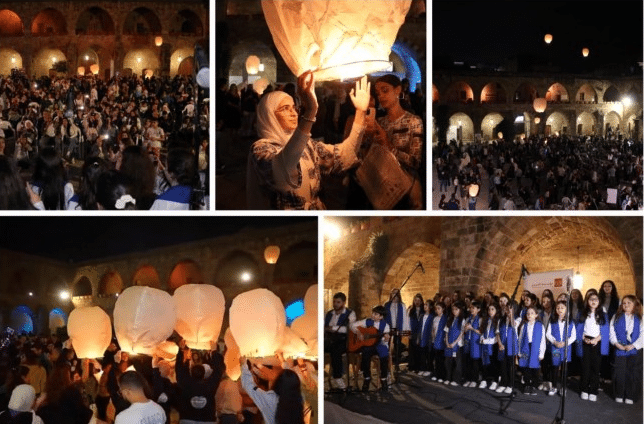
The Syrian arena:
Notable airstrikes in Syria:
(April 9) After one launch was identified from Syria at the Israeli community of Yonatan, in reprisal, the IDF attacked Syrian army infrastructure in the Mahaja area and fired artillery at a Syrian army position in the south of the country.
Syria – General:
(April 8) During the visit of Iranian Foreign Minister Hossein Amir-Abdollahian, the new Iranian consulate was opened in Damascus, not far from the Iranian embassy and replacing the previous consulate destroyed in the airstrike on April 1, 2024.
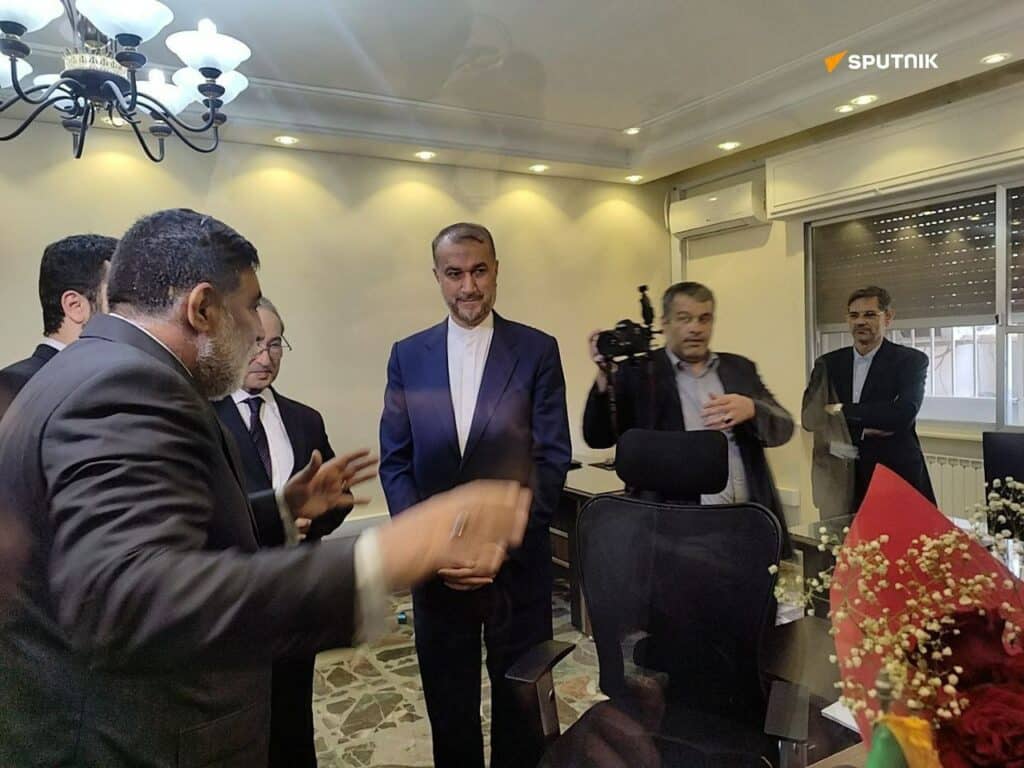
The Shiite Axis – General:
The most recent attack on US bases in Iraq and Syria, officially reported by US Central Command, took place on February 20. According to various reports, the attacks on the American bases stopped due to direct Iranian instructions to the Shiite militias, against the background of secret agreements between Iran and the United States. It should be noted that at this stage it is unclear whether a decision has been made by the Shiite axis to renew the attacks.
According to local reports in Syria (April 7), two rocket attacks were carried out against the CONOCO base in eastern Syria. There are currently no further indications to corroborate these reports.
(April 9) The Islamic resistance in Iraq claimed responsibility for three attacks against Israel (which took place in recent days): an attack on a “vital target” in the city of Ashkelon, an attack on the oil port in Ashkelon, and an attack on another undisclosed “vital target.”
The attached video shows documentation of the “Islamic resistance in Iraq” allegedly launching cruise missiles at Israel (Ashkelon and Beersheba). The footage appears to show “Paveh” cruise missiles from the Sumar class of Iranian missiles. The missile’s stated range is 1,600 kilometers, and its warhead weighs 150-200 kilograms of explosives. Such missiles were also delivered from Iran to the Houthis in Yemen.
(April 10) The Islamic resistance in Iraq claimed responsibility for attacking the port of Haifa and the oil refineries located there using two UAVs. No further indication of an attack was reported.
(April 12) The Islamic resistance in Iraq issued a statement threatening the United States if Israel or the United States attacked Iraq or the Axis countries, as part of preparations for the Iranian response to the bombing of the Iranian consulate in Damascus.
(April 13) IRGC naval forces seized the MSC ARIES, a Portuguese ship in the Strait of Hormuz. There were Filipino crewmembers on board. According to various reports, the ship is apparently partly owned by an Israeli businessman.
On April 15 Israeli Air Force planes intercepted an aerial target en route into Israeli territory from the east.
Yemen – Houthi-land:
During the past week, coalition forces managed to strike 12 UAVs, 2 ballistic missiles, an anti-aircraft battery with missiles ready to be launched or intended to be launched by the Houthis. A radar device was also damaged.
(April 10) The Houthis claimed to have carried out four attacks:
- An attack on two ships linked to Israel: MSC DARWIN and MSC GINA in the Gulf of Aden.
- An attack on a US Ship, the MAERSK YORKTOWN in the bay of Aden.
- An attack on a US Navy Ship in the Gulf of Aden using several UAVs.
(April 14) – An aerial target, apparently launched from Yemen, was intercepted by the Iron Dome stationed on a naval ship in the Gulf of Aqaba.
Since October 2023, there have been 104 Houthi shooting incidents.

